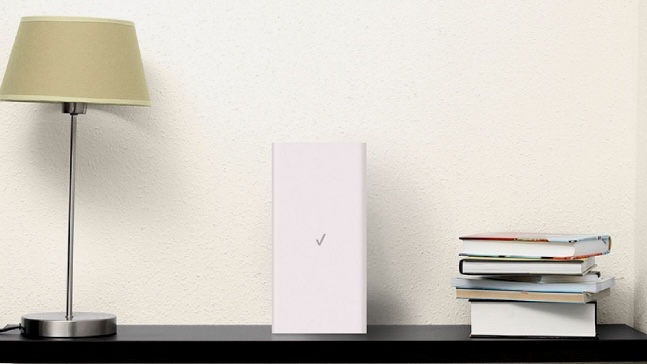In Menifee, California, six new homes have become the first in North America to integrate electric vehicles (EVs) as a power source for residential use. These homes utilize the Kia EV9 in conjunction with Wallbox’s Quasar 2 bidirectional charger, allowing the vehicles’ 100-kilowatt-hour (kWh) batteries to provide electricity to essential circuits during blackouts or times of high energy costs. This innovative approach marks a significant milestone, as it is the first residential vehicle-to-home (V2H) system in the United States using the Combined Charging System (CCS) high-power DC charging standard.
The CCS standard, widely used in both European and North American electric vehicle infrastructure, has been adapted for this project, which began monitoring in July. The homes feature smart electrical panels that automatically manage the two-way power flow. This means the EVs can be charged from the grid or rooftop solar panels and can also supply energy back to the home when necessary. Notably, the system isolates each house from the grid during outages, ensuring safety for utility workers and preventing current from flowing into external power lines.
Scott Samuelsen, founding director of the Advanced Power and Energy Program at the University of California, Irvine, is overseeing the two-year trial. He emphasized the significance of this project, stating that it demonstrates how bidirectional charging with CCS can function in occupied homes. “It’s a step toward vehicles that not only move people but also strengthen the energy system,” Samuelsen noted.
Historically, two-way charging has been implemented primarily in Japan. The Nissan LEAF-to-Home program, which began in 2012 following the Tōhoku earthquake and tsunami, showcased the concept using the CHAdeMO standard. However, CHAdeMO has seen limited adoption outside of Japan. In contrast, North American and European manufacturers have predominantly opted for CCS, which until recently only supported one-way fast DC charging. This distinction makes Menifee’s V2H-enabled neighborhood particularly noteworthy, as it provides researchers with real-world data on a technology that has largely remained within pilot programs.
The pairing of the Kia EV9 with the Wallbox Quasar 2 can deliver up to 12 kilowatts of power from the vehicle to the home. This capability allows for critical household functions, such as heating, cooling, refrigeration, and networking, to remain operational during outages or peak demand periods.
While Menifee is advancing in this area, momentum towards commercial V2H systems has slowed elsewhere. For instance, the Ford F-150 Lightning offers home backup capabilities through a partnership with Sunrun, yet Sunrun’s equipment is not compatible with CCS. Ford has also announced a production pause for the Lightning, delaying broader rollout plans. Similarly, General Motors’ Ultium Home system, designed for multiple electric models including the Cadillac Lyriq and Chevrolet Silverado, faces its own challenges, while Tesla’s PowerShare feature remains in limited early commercial rollout, with bidirectional capabilities currently restricted to the Cybertruck.
The Menifee project is producing valuable operational data from actual households, showcasing how EVs can function as substantial energy reserves.
A significant aspect of this development is the evolution of the CCS standard itself. Initially created with a focus on rapid charging, CCS was not designed for bidirectional power flow due to safety concerns and the added costs of hardware. The original communication protocol, ISO 15118, did not even include a mechanism for power export. However, the 2022 update, known as ISO 15118-20, introduced secure two-way communication, enabling CCS vehicles to supply energy back to buildings and the grid.
The Wallbox Quasar 2 residential charger utilizes this update through an advanced circuit design. It features silicon-carbide transistors for efficient bidirectional energy flow, supporting typical household demands.
Each Menifee home is equipped with a rooftop solar array and a 13-kWh SunVault stationary battery from SunPower. During normal operations, solar energy powers everyday household loads and charges the stationary battery. On sunny days, the solar panels can also recharge the Kia EV9. When the grid goes down or energy prices surge, the home can switch to an isolated mode. The solar energy and stored energy from the SunVault maintain vital systems, while the EV battery provides additional power if necessary.
Researchers at UC Irvine monitored how solar output, stationary storage, and vehicle power interacted, especially under summer demand and wildfire-related grid stress. The findings revealed that the vehicle plays a crucial role in enhancing resilience, relieving strain on the grid, increasing renewable energy use, and lowering costs by supplying power during peak-rate hours.
As this project unfolds, it highlights the need for home builders and electric vehicle service equipment manufacturers, such as Wallbox, to rethink how they meet the engineering demands introduced by V2H technologies. Utilities must also adapt their interconnection procedures and energy pricing structures to accommodate this new bidirectional power flow.
Analysts predict that the market for bidirectional charging systems will experience double-digit annual growth through the late 2020s as costs decrease and standards mature. In regions prone to wildfires or storms, as well as those facing steep time-of-use pricing, projects like the one in Menifee illustrate a viable path toward utilizing electric vehicles as flexible and substantial energy reserves. As this technology advances, the distinction between energy suppliers and consumers may evolve significantly, reshaping the landscape of energy management.






